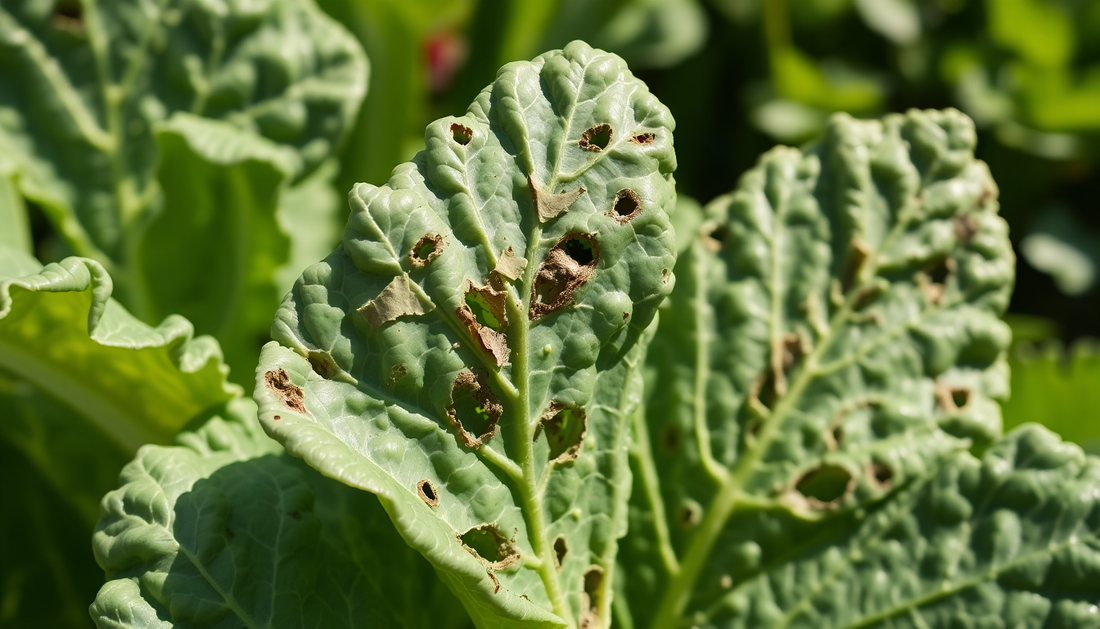
Why Are My Kale Leaves Getting Holes?
As a passionate gardener, I know the frustration of seeing your beloved kale plants develop unsightly holes in their leaves. It's a common problem that can be caused by a variety of factors, from pests to environmental stressors. In this comprehensive blog post, we'll dive deep into the reasons behind this issue and explore effective strategies to keep your kale thriving and hole-free.
Understanding the Causes of Kale Leaf Holes
Kale is a hardy, nutrient-dense green that is often hailed as a superfood. However, its delicate leaves can be susceptible to damage from various sources. Let's take a closer look at the most common culprits behind those pesky holes in your kale leaves.
Insect Pests
One of the primary reasons for holes in kale leaves is the presence of insect pests. These tiny critters can wreak havoc on your plants, munching away at the leaves and leaving behind unsightly damage. Some of the most common kale-munching pests include:
- Cabbage Worms: The larvae of the cabbage white butterfly, these green caterpillars can devour kale leaves, leaving behind ragged, lace-like holes.
- Aphids: These tiny, sap-sucking insects can congregate on the underside of kale leaves, causing them to become discolored and develop small holes.
- Flea Beetles: These tiny, jumping beetles feed on the leaves, creating small, round holes that can coalesce into larger damage.
- Leaf Miners: The larvae of these insects burrow into the leaves, creating winding, serpentine tunnels that can weaken the plant.
Environmental Factors
In addition to pests, environmental stressors can also contribute to the development of holes in kale leaves. These include:
- Nutrient Deficiencies: If your kale plants are lacking in essential nutrients, such as nitrogen or calcium, they may become more susceptible to leaf damage.
- Drought Stress: Periods of prolonged drought can make kale leaves more vulnerable to damage, as the plant's natural defenses become compromised.
- Temperature Extremes: Both excessively hot and cold temperatures can put stress on kale plants, leading to leaf damage and the formation of holes.
- Mechanical Damage: Physical damage to the leaves, such as from hail, wind, or even heavy-handed harvesting, can create openings that can worsen over time.
Strategies for Preventing and Treating Kale Leaf Holes
Now that we've identified the potential causes of those pesky kale leaf holes, let's explore some effective strategies for preventing and treating this issue.
Pest Management
Implementing a comprehensive pest management plan is crucial for keeping your kale plants healthy and hole-free. Here are some tips:
- Monitor for Pests: Regularly inspect your kale plants, paying close attention to the undersides of the leaves, where many pests like to hide.
- Use Organic Pest Control: Opt for natural, eco-friendly pest control methods, such as introducing beneficial insects, applying neem oil, or using diatomaceous earth.
- Practice Crop Rotation: Rotating your kale crop to a different location each year can help break the life cycle of many common pests.
- Encourage Beneficial Insects: Attract predatory insects like ladybugs, lacewings, and parasitic wasps, which can help keep pest populations in check.
Nutrient Management
Ensuring that your kale plants receive the right balance of nutrients is essential for maintaining strong, healthy leaves that are less susceptible to damage.
- Test Your Soil: Conduct a soil test to determine the nutrient levels in your garden and identify any deficiencies.
- Amend with Organic Matter: Incorporate compost, aged manure, or other organic matter into your soil to improve nutrient availability and soil structure.
- Use Balanced Fertilizers: Apply a balanced, slow-release fertilizer formulated for leafy greens to provide a steady supply of essential nutrients.
- Foliar Feeding: Consider using a diluted liquid fertilizer or seaweed extract to provide a quick boost of nutrients directly to the leaves.
Environmental Management
Optimizing the growing conditions for your kale plants can also help prevent and mitigate leaf damage.
- Maintain Consistent Moisture: Ensure that your kale plants receive consistent, even moisture, avoiding periods of drought or waterlogging.
- Provide Shade: In hot, sunny climates, consider using shade cloth or other structures to protect your kale from intense sunlight and heat.
- Mulch the Soil: Apply a 2-3 inch layer of organic mulch around your kale plants to help retain moisture and suppress weed growth.
- Protect from Mechanical Damage: Use row covers or cloches to shield your kale plants from hail, wind, and other physical damage.
By implementing a combination of these strategies, you can effectively prevent and treat the issue of holes in your kale leaves, ensuring that your plants remain healthy, vibrant, and productive throughout the growing season.
Conclusion
Dealing with holes in kale leaves can be a frustrating experience, but with the right knowledge and approach, you can keep your plants thriving and hole-free. By understanding the underlying causes, whether they be pests, nutrient deficiencies, or environmental stressors, and implementing a comprehensive management plan, you can enjoy a bountiful harvest of lush, hole-free kale.
Remember, gardening is a journey, and every challenge presents an opportunity to learn and grow. With patience, persistence, and a little bit of green-thumbed know-how, you can overcome the issue of kale leaf holes and enjoy the many benefits of this nutrient-dense superfood.
Happy gardening!






No comments